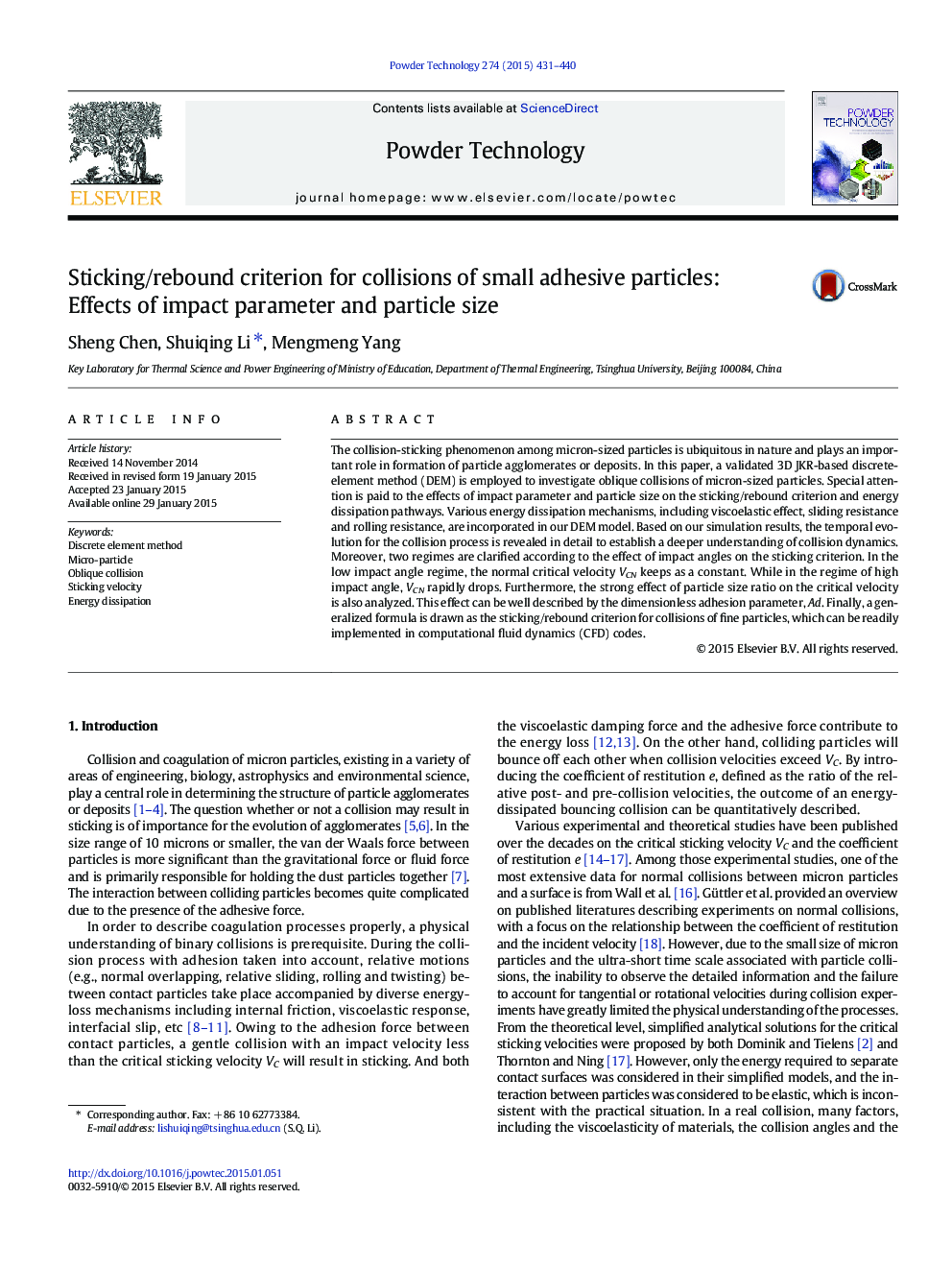| Article ID | Journal | Published Year | Pages | File Type |
|---|---|---|---|---|
| 235742 | Powder Technology | 2015 | 10 Pages |
•Microscopic information of oblique collisions between micro-particles is revealed.•Energy dissipation pathways during collisions are investigated.•An explicit formula is drawn as a sticking/rebound criterion for binary collisions.•The criterion incorporates both effects of particle size and impact parameters.
The collision-sticking phenomenon among micron-sized particles is ubiquitous in nature and plays an important role in formation of particle agglomerates or deposits. In this paper, a validated 3D JKR-based discrete-element method (DEM) is employed to investigate oblique collisions of micron-sized particles. Special attention is paid to the effects of impact parameter and particle size on the sticking/rebound criterion and energy dissipation pathways. Various energy dissipation mechanisms, including viscoelastic effect, sliding resistance and rolling resistance, are incorporated in our DEM model. Based on our simulation results, the temporal evolution for the collision process is revealed in detail to establish a deeper understanding of collision dynamics. Moreover, two regimes are clarified according to the effect of impact angles on the sticking criterion. In the low impact angle regime, the normal critical velocity VCN keeps as a constant. While in the regime of high impact angle, VCN rapidly drops. Furthermore, the strong effect of particle size ratio on the critical velocity is also analyzed. This effect can be well described by the dimensionless adhesion parameter, Ad. Finally, a generalized formula is drawn as the sticking/rebound criterion for collisions of fine particles, which can be readily implemented in computational fluid dynamics (CFD) codes.
Graphical abstractFigure optionsDownload full-size imageDownload as PowerPoint slide
